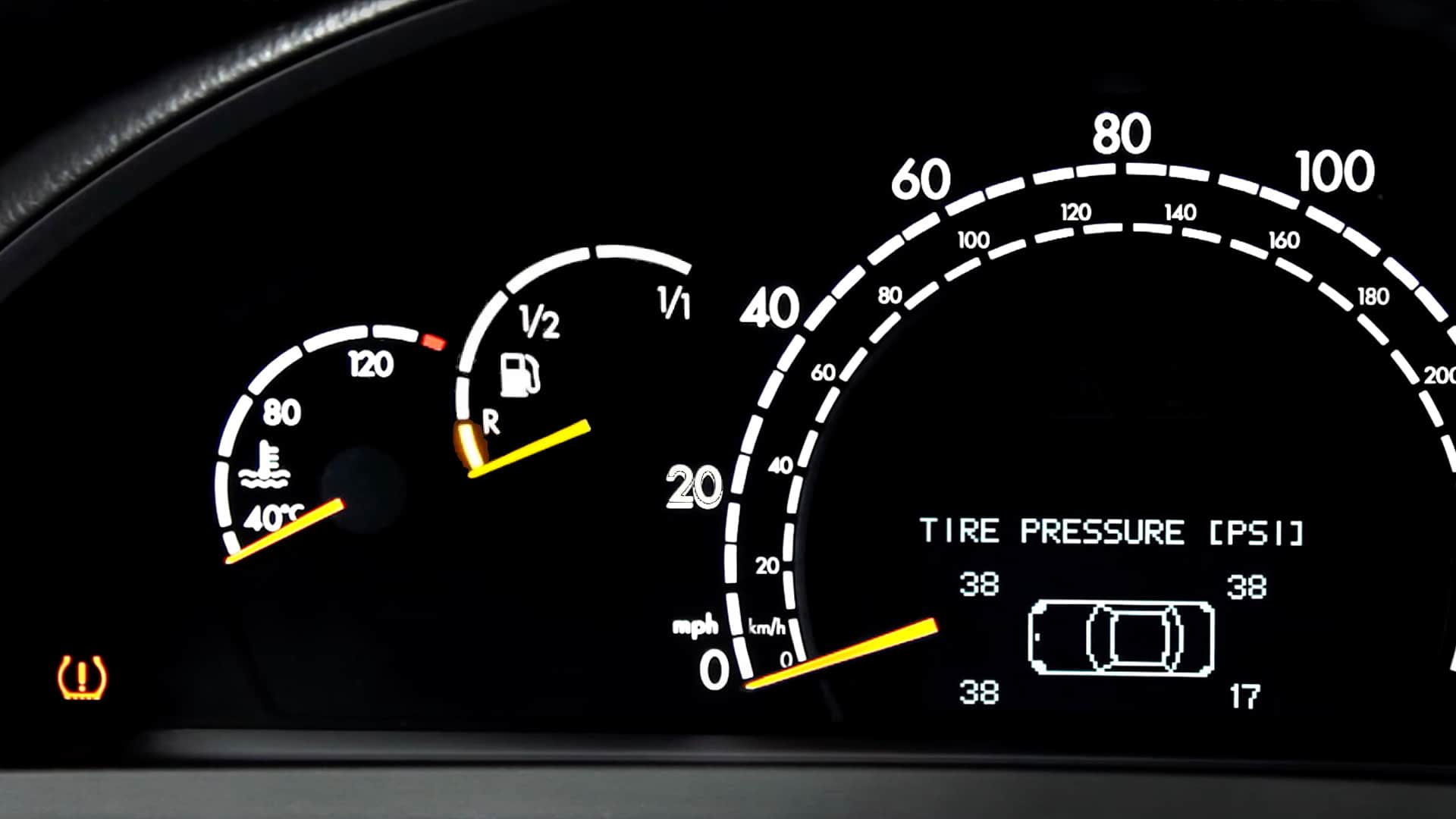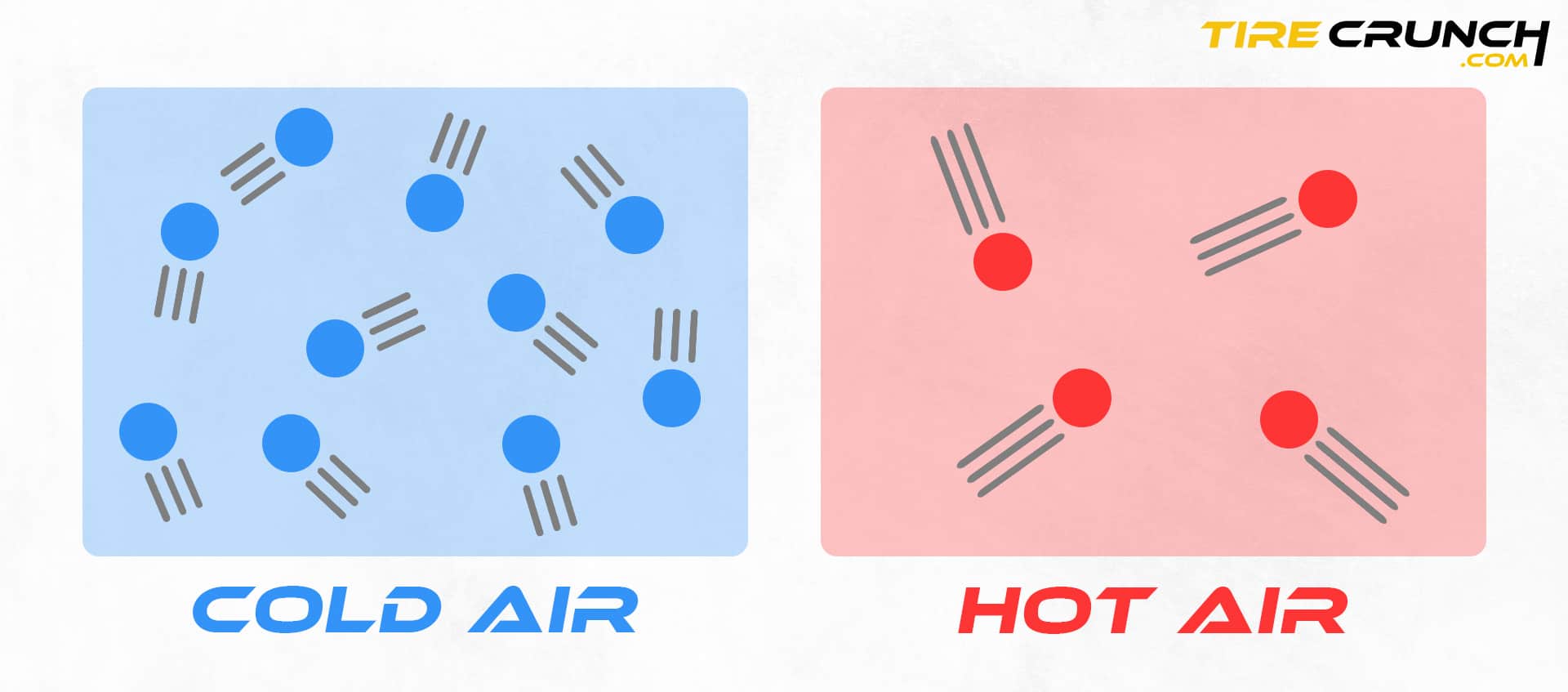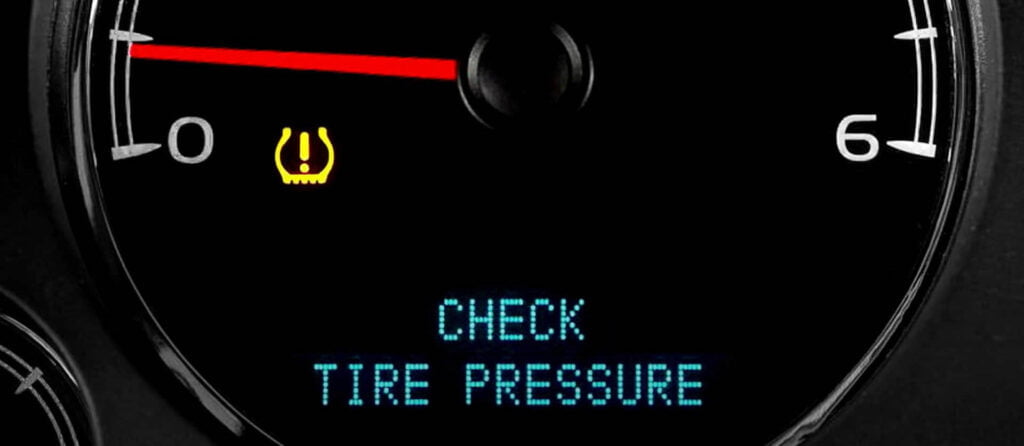Why Does Tire Pressure Light Come on When Cold?

As cold weather approaches and temperatures drop, many drivers notice the tire pressure light illuminating on their dashboard. This common phenomenon occurs due to the direct relationship between air temperature and tire pressure.
During colder weather, the air inside a tire contract, leading to a decrease in tire pressure. As a result, the vehicle’s Tire Pressure Monitoring System (TPMS) detects this change and triggers an alert through the warning light indicator.
Cold Weather Effects On Tire Pressure

The physics behind the decrease in tire pressure in colder temperatures can be explained by Charles’s Law. When the temperature drops, the air molecules inside tires lose energy and move slower, creating less space between them.
As a result, they take up less space and exert less pressure on the tire walls, causing a decrease in tire pressure.
For every 10-degree Fahrenheit drop in temperature, you can expect a loss of 1 PSI.
So if your tires have an ideal pressure of 30 PSI and the temperature drops from 70 degrees to freezing overnight, that could result in a loss of about 3 PSI.
What To Do When The Tire Pressure Light Comes On In Cold Weather
When the tire pressure light comes on in cold weather, it is important to check the tire pressure and inflate the tires to the recommended pressure.
Other Factors That Can Cause The Tire Pressure Light To Come On

Apart from cold weather, the tire pressure light can also come on due to other reasons.
Consequences Of Ignoring Low Tire Pressure
Ignoring low tire pressure can lead to a variety of consequences:
Related Reading: Can You Drive Summer Tires In Cold Weather?
FAQs
Why Does Tire Pressure Light Come on When Cold?
The cold weather can cause the air inside the tire to contract, leading to a drop in tire pressure. This drop in pressure can trigger the tire pressure monitoring system (TPMS) to illuminate the warning light on your dashboard.
Can You Drive With A Low Tire Pressure Light?
If your tire pressure light is on, it’s not recommended that you drive with low tire pressure. Ignoring this warning can lead to reduced fuel efficiency, decreased tire lifespan, and increased risk of accidents.
Why Is My Tire Pressure Light On When My Tires Are Fine?
Sometimes, the tire pressure light may come on even when your tires seem to be properly inflated. One common reason for this occurrence is a faulty TPMS sensor. These sensors can sometimes malfunction and send incorrect signals to your vehicle’s onboard computer, causing the warning light to appear.
Final Words
In conclusion, it’s important to remember that the tire pressure light coming on during cold weather is a common occurrence and doesn’t necessarily mean you have a flat tire.
Understanding how TPMS works and the effects of temperature on tire pressure can help prevent false alerts. Regularly checking tire pressure and adjusting when needed will not only avoid potential safety risks but also increase fuel efficiency and prolong tire life.
Don’t ignore your low tire pressure warning – take action promptly to ensure your vehicle is running at its best.
